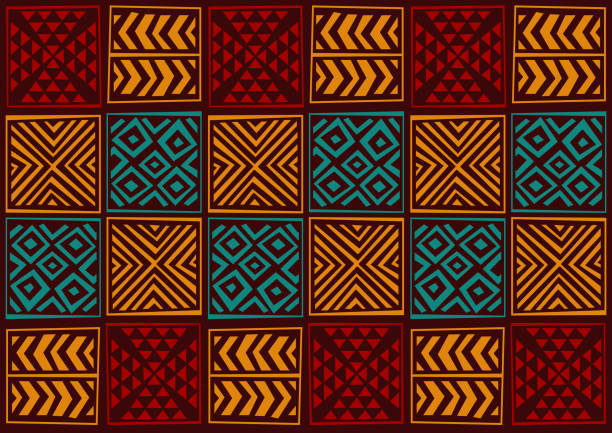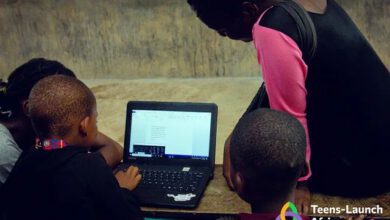Afrocentric Design in Tech: Challenges & Prospects

Introduction
Many apps, websites, and electronic products are now reflecting a distinct African identity, rather than imitating Western standards. This method, known as Afrocentric design, incorporates African cultures, languages, colors, values, and daily experiences.
Over the last decade, Nigeria has been one of Africa’s major ICT countries, with Lagos serving as a hub. As Afrocentric design gains popularity, it poses both exciting prospects and real challenges for the continent’s technology sector.
Why Afrocentric Design Matters
In the past, most tech products used in Africa looked like what people were already using in the U.S. or Europe. Whether it was a banking app, a learning platform, or a basic website, many followed Western designs, clean, minimal, and straight to the point.
But Africa is different. We are expressive, colorful, and diverse. Our cultures, languages and everyday life shape how we see and use technology. Design is not just about what looks good; it’s about what feels familiar.
With over 250 ethnic groups and more than 500 languages, Nigeria alone shows just how rich and complex African design can be. For example, while the color red may mean danger or warning in Western design, in some Nigerian communities, it represents prosperity, vitality, or celebration.
Many African designers draw inspiration from local fabrics like Ankara and Aso-Oke, using their vibrant patterns and colors to shape how apps and websites look and feel.
In the midst of this, Afrocentric design reminds us that tech doesn’t have to look or feel the same everywhere.
It brings African identity into the digital space from interfaces inspired by our textiles and languages to app layouts that reflect community values instead of individual behavior.
Even in the fashion industry, African culture is gaining global recognition. In 2024, the global fashion industry is worth over $2.5 trillion. Africa’s share may be smal just 1.2% or $31 billion but it’s growing fast. Designers here are blending tradition with tech, showing how culture and creativity can shape future industries, including digital ones.
With over 1.4 billion people across Africa and more than 2,000 languages spoken, designing without local context means missing a huge opportunity. Afrocentric design shouldn’t just be about looks, but must show:
- Local languages and dialects in design.
- The meaning behind colors, symbols, and rhythms.
- User flows that fit communal living, not just individual logic.
- Tech working for both rural and urban users.
Current Challenges Holding Afrocentric Design Back
While Afrocentric design is gaining momentum, several hurdles continue to limit its growth and adoption in Africa’s tech industry.
Western Influence Still Dominates
Many African startups continue to adopt Western design standards not always by choice, but often by necessity. Global investors, product advisors, and accelerator programs typically expect user interfaces that align with familiar international models. This pressure to “look professional” often forces founders to follow templates designed for Western users, even when those designs don’t reflect African realities.
Limited Representation in Global Design Tools
Mainstream design systems like Google’s Material UI or Apple’s Human Interface Guidelines weren’t built with African cultures or users in mind. Designers looking to create Afrocentric products have to put in extra effort reimagining assets, customizing visuals, and creating icons or layouts from scratch. This slows down development and increases the creative burden.
Underinvestment in African Design Talent
While developers across Africa are getting more recognition and funding, designers particularly those focused on cultural relevance are often left behind. Many creative professionals lack access to proper training, mentorship, or tools. This has led to a talent gap, with fewer designers equipped to lead or scale Afrocentric design initiatives.
Scarcity of Local Design Resources
Fonts, templates, UI kits, and visual assets tailored to African languages or cultures remain limited. Designers must constantly build their own libraries, which increases production time and cost. This lack of infrastructure makes it harder to create consistent, Afrocentric experiences at scale.
Balancing Culture and Functionality
One of the biggest challenges is striking the right balance between cultural expression and usability. A design may be rich in symbolism and style, but if it confuses users or lacks intuitive navigation, it won’t succeed. Afrocentric design must constantly juggle authenticity with practicality.
What are opportunities in Afro-centric Design
Despite the hurdles, Afrocentric design is steadily gaining ground in Africa’s tech ecosystem not just as a creative trend, but as a practical movement reshaping how products are built and who builds them.
Training the Next Generation of Designers
Organizations like AltSchool Africa, Decagon, and Ingressive for Good are opening doors for aspiring developers and designers, offering quality education at little to no cost. These programs are not just filling skills gaps they are nurturing talent grounded in local context and cultural relevance.

At the grassroots level, communities such as She Code Africa, Naija Designers Community, and Google Developer Groups are playing a major role. Through peer mentorship, real-world projects, and job support, they’re helping new designers build confidence and competence while staying connected to their roots.
Informal Learning and Peer Networks
Across platforms like Twitter (X), Telegram, and WhatsApp, informal learning groups are becoming powerful tools for growth. Young creatives share resources, collaborate on freelance gigs, and get feedback on their work. These networks have become alternative classrooms flexible, inclusive, and highly responsive to the needs of local tech talent.
Afrocentric Products Are Gaining Visibility
Some African tech products are already embracing Afrocentric design in real ways. Apps like Abeg (now PocketApp) and Eden Life use local languages, cultural references, and vibrant aesthetics to build stronger user connection. These apps show that culturally grounded design doesn’t just look good it builds trust and drives adoption.
Culturally-Inspired Design Assets
More African designers are developing their own Figma kits, icon sets, and UI templates inspired by African art, fabrics, and environments. These resources are gradually forming a new design language one that is both distinctly African and globally useful.
Global Recognition for Local Creatives
Events and platforms like Designers Arise, Afrikan Digital, and ADPList Africa are putting African designers on the global stage. At the same time, global companies are seeking culturally-aware local designers to help them reach African markets in more authentic ways.
Final Thought
If Africa wants to lead in the tech world, design must be part of the journey and that design should truly look and feel like us. Afrocentric design isn’t just about looking nice; it’s about making sure our culture, languages, and way of life show up in the tech we use every day.
To keep this growing, startups, tech leaders, and schools need to put more support behind African designers. We need to create tools and systems made for us, involve our communities when building products, and fund more projects that highlight African stories. And most importantly, we should celebrate the creative people already doing this work.
At the end of the day, it’s not just about adding African colors or patterns. It’s about making apps and websites that truly connect with people here. When tech reflects who we are, people trust it more, use it more.





